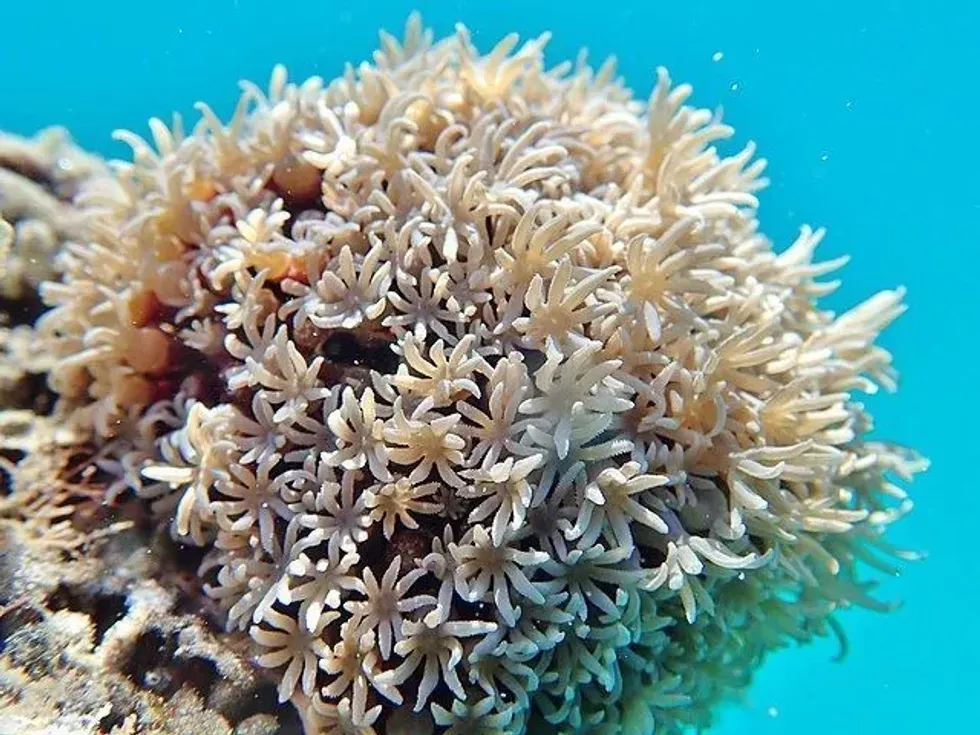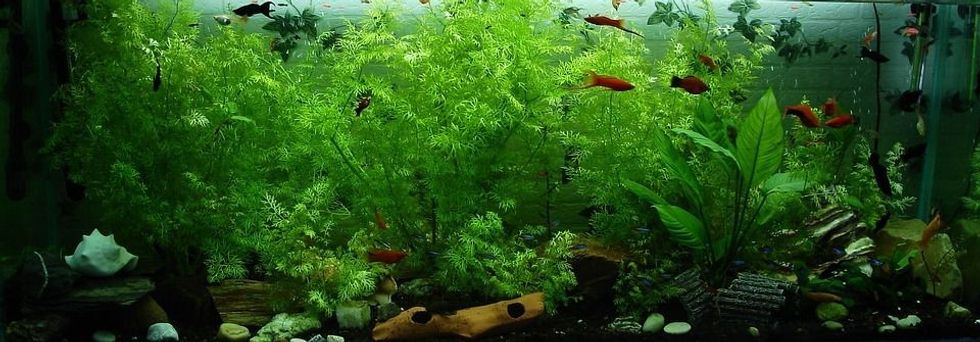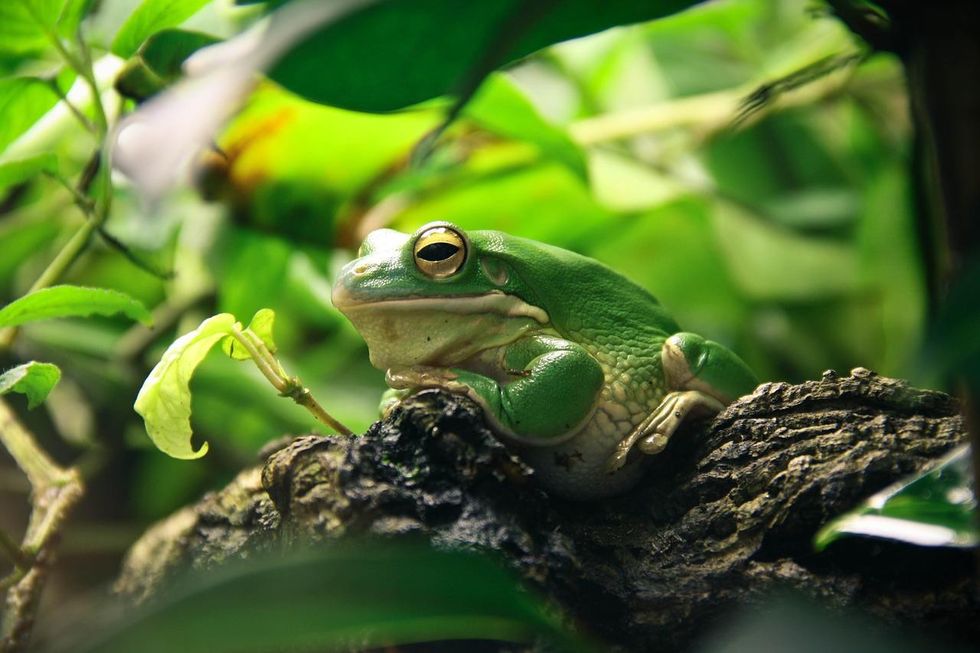Organ pipe coral is a soft coral found in the Indian and Pacific Oceans. The distribution of pipe organ coral range from the red sea to the Great barrier reef of Australia.
They are found in shallow water, near bedrocks, sheltered areas, and mid-shelf reefs. Foods include zooxanthellae algae and planktonic organisms.
Pipe organ coral care is very important for their health and survival while keeping them in an aquarium. Otherwise, medium to high light requirements, moderate water movement, and high water quality are also helpful for their growth.
Strontium, iodine, calcium, phosphorus, and other trace elements are good for their health.
The outer skeleton is reddish in color whereas the polyps surrounding it is indifferent coloration like green, fluorescent white, or gray. Leaving the soft parts behind, the organ pipe coral fossil appears as a brightly colored mass of tubes resembling tiny organ pipes.
They are kept as pets in aquariums and reef tanks for scientific, medical, and commercial value. Thus, the over-extraction of this specimen has led to a decline in the population of Tubipora musica and was mentioned in the Near Threatened under the IUCN red list.
If you enjoy reading about the organ pipe coral, do check out interesting facts about staghorn corals and reef sharks.
Organ Pipe Coral Interesting Facts
What type of animal is an organ pipe coral?
An organ pipe coral is a type of invertebrate from the Tubiporidae family of Tubipora genus.
What class of animal does an organ pipe coral belong to?
An organ pipe coral is a type of coral from class Anthozoa of genus Tubipora.
How many organ pipe corals are there in the world?
The exact number of this specimen is unknown. It is estimated that there is more than a 50% decrease in their total population.
Where does an organ pipe coral live?
The Tubipora musica is found in the Indian Ocean and central Pacific ocean. It is also spotted near the Egyptian Red Sea and south of Japan.
What is an organ pipe coral's habitat?
They are found in shallow water and near bedrocks, sheltered areas and mid shelf reefs. The ocean depth range from ft (2-20 m).
Who do organ pipe corals live with?
Several tentacles and tubes join together with parallel platforms to form blue or green colonies of corals. A large number of colonies have been found to contain polyps of a mixture of colors, although most have all one color. As a result, the colony usually contains distinct color segments and different colored polyps are not seen together.
How long does an organ pipe coral live?
The lifespan of Tubipora musica is unknown but many corals are known to live past the 100 years of age. It is not uncommon for blue colonies to live for decades to centuries, and some deep-sea colonies have lived for more than 4000 years.
Pipe organ coral growth rate ranges from weeks to two years. Foods, medium to high lighting, trace elements like calcium and moderate water movement are necessary for survival.
How do they reproduce?
They have asexual and sexual reproduction. Budding or fragmentation is the method of asexual reproduction for corals. Budding occurs when new polyps emerge from parent polyps to form new blue, green or purple colonies.
By fragmentation, an entire colony separates from the original colony. A larger marine colony could be separated from the main marine colony, for instance, during a storm or when a boat grounding occurs. In sexual reproduction, the organ coral produces an egg and sperm at the same time.
What is their conservation status?
A Tubipora musica has been added under the Near Threatened in the IUCN Red List for endangered species. According to estimates, the population of corals has declined by more than half.
Organ Pipe Coral Fun Facts
What do organ pipe corals look like?
Pipe organ corals are a soft coral but sometimes referred to as a hard corals due to their external skeleton which is reddish in color. The Tubipora genus consist of thousands of calcium made tubes connected in parallel and are generally upright.
It's actually sclerites that make up these tubes. Instead of being a hard calcareous skeleton found on stony coral, the sclerites are fused together to form the skeleton.
Each polyp has eight feathery sweeper tentacles. In addition to growing on multi-level platforms, the blue, green or purple colonies are also surrounded by small, thin tubes that look like pipes.
Usually, the skeleton of a brittle tube is reddish, and the polyps are housed inside it. There are several different colors of polyps, including green, gray, cream, silver, and white.
Tubes and tentacles can vary considerably. Once the soft parts of the coral fossil are removed, the skeleton looks like a mass of colorful tubes that look like tiny organ pipes.

How cute are they?
A Tubipora musica looks cute from the outside with polyps covering its outer skin. But the polyps are not at all beautiful or cute as they are dull in color. Whereas corals have a bright red color on the skeleton, making them look cute. Also, the tentacles covering it also adds to its features.
How do they communicate?
They react as a colony when one of the parts is disturbed by one of their numbers. Upon disturbance, corals will exhibit a through-conducting response across the marine colony. Electrical stimulation and mechanical stimulation have both been shown to be effective for corals.
How big is an organ pipe coral?
Corals are quite similar to star polyp and clove polyp corals in appearance. Unlike the mentioned ones, they grow tightly against the stony platform. They are 23.6 in (0.6 m) in length.
How fast can an organ pipe coral move?
Pipe organ coral is sessile in nature; it is immobile and fixed in one place. This means that they are permanently attached to the ocean floor, much like other plants.
How much does an organ pipe coral weigh?
The weight of pipe organ coral is estimated to be several tons. There is no approximate number to define it.
What are the male and female names of the species?
Neither males nor females of corals can be distinguished by a definite name. But these species are known by different names according to their color as red organ pipe coral, white pipe organ coral, pink pipe organ coral, green organ pipe coral.
What would you call a baby organ pipe coral?
A baby organ pipe coral is called a bud.
What do they eat?
The organ pipe coral (Tubipora musica) foods include plankton. A symbiotic relationship with an algae family known as zooxanthellae enables them to absorb dissolved organic matter and take in planktonic organisms as well as microscopic food from the water column. When kept in an aquarium, they mostly use lighting and zooxanthellae as the main diet.
Are they harmful?
The organ pipe coral is known to be the most peaceful in nature. It is not harmful at all.
Would they make a good pet?
Hobbyists keep many species of coral in an aquarium or a reef tank. Pipe organ coral placement is done on a stony platform along with other marine animals like fish. They are a peaceful tank mate.
Did you know...
The organ pipe coral is pretty famous among dealers, hobbyists, tourists and medical organizations. It is because of the fact that they have a high scientific and medical value, their use in jewelry and commodities and it is a very peaceful pet to be kept in an aquarium.
Because of its popularity in the last 10 years, it is often legally harvested and smuggled. Making it the top 15 traded corals in the world.
During ancient times, it was believed to protect against witchcraft, protect children from illness, and promote fertility.
Because of its overharvesting, the decline rate of this has increased tremendously. Scientists have discovered that the most flourishing blue marine colonies are found to be in the strong water currents, which makes it difficult to collect them. Thus, scientists are researching how organ pipe corals can be farmed, from creating protected areas to conducting awareness campaigns.
Some other well-known corals are elkhorn coral, flowerpot coral, finger coral, and elegance coral.
Organ pipe coral care
An established rock reef environment is a must for keeping organ pipe coral. Stable tank or aquarium conditions are important to spread them. High water quality is rich in nutrients but avoids excess skimming.
Frequent water change is also a necessity. Addition of calcium, magnesium, strontium, iodine, phosphorus, and other trace elements will be great for proper maintenance of good growth. Marine fish and other aquatic species can be kept for organic matter production.
A tank with proper environment will be much suitable for the proper growth of pipe organ coral. Moderate to high lighting and moderate turbulent water movement must be provided.
One-directional water flow irritates the pipe organ coral which will restrict the polyp expansion. Throughout its parameter, pipe organ coral grows calcium tubes. The pipe organ coral invasive nature makes it a great replacement for green star polyps.
Clove vs. organ pipe coral
The clove polyp comes in wide colors like brown, green, cream, or yellowish. Whereas, the pipe organ coral only comes in one color which is red.
Clove polyps do well under any type of lighting conditions but the pipe organ coral requires high lighting for its proper growth. Clove polyps are bulletproof when kept under moderate conditions but the pipe organ coral requires a proper system when kept under care in aquariums or reef tanks.
Here at Kidadl, we have carefully created lots of interesting family-friendly animal facts for everyone to discover! For more relatable content, check out these hard coral facts and brain coral facts pages.
You can even occupy yourself at home by coloring in one of our free printable organ pipe coral coloring pages.
Main image by Frédéric Ducarme.
Second image by Tim Sheerman-Chase.









